LGBTQ+ History: The Story of Europe
By Zoe Schulz, myGwork
Today, Europe is largely thought of as a progressive and open place for LGBTQ+ people. Often ‘The West’ is depicted as the pioneers of LGBTQ+ equality, leading the way for the rest of the world to follow. Currently, almost 60% of countries with equal marriage are situated in Europe and in a recent list of the most LGBT-friendly cities in the world, 6 out of 10 of them were European.
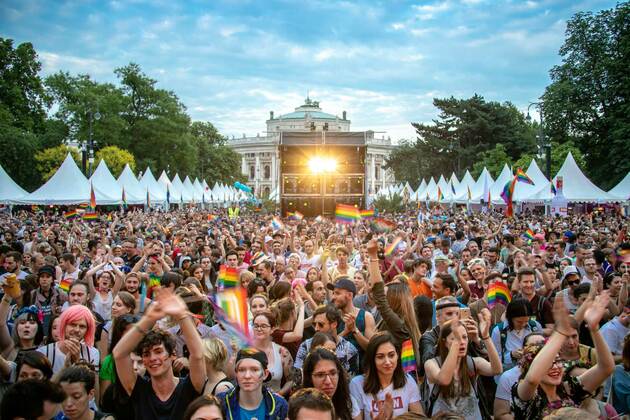
EuroPride in Vienna, 2019
However, on the other side of the coin, 21 countries within Europe have prohibited same-sex marriage and partnerships, and within these countries acceptance is actually decreasing. On top of this, even in progressive parts of Europe, we are seeing a rise in far-right politicians with anti-LGBTQ+ policies. Homophobic, biphobic and transphobic hate speech from political leaders has also increased in 17 European countries, including those thought to be progressive, such as Spain, Portugal and Finland. There’s also a strong relationship between hate speech and a surge of violence towards queer people, with trans people remaining the most susceptible to violence, especially women of colour and sex workers.
To make matters more complicated, when we look closer at the countries who now proudly relish in their acceptance of the LGBTQ+ community, several of them have a hidden responsibility in the homophobia, biphobia and transphobia they often harshly judge in countries abroad. Many European countries have a dark legacy of importing homophobia overseas, a consequence of past colonialism that is too often almost overlooked.
Looking back, there were many periods and rules in Europe where same-sex relations were commonly accepted. The Greeks, Romans and Pagan Celtics all had very open views of sexuality and gender. Yet, all of this came to a harsh change in 313 AD., when Emperor Constantine converted to Christianity and with this The Roman Empire came under the reign of The Catholic Church. Henceforward, any sexual acts outside of procreation were considered gravely sinful and the dire consequences of this shift were felt by queer people across the continent for hundreds of years to follow.
This intolerance and narrow view of sexuality and gender persisted throughout the Middle Ages. Medieval Europe had harsh punishments for homosexual behaviour, with ‘sodomy’ often penalised with death. This cruel and relentless persecution reached its peak with the Medieval Inquisition. These were a series of inquisitions starting in 1184 and lasting almost half a century. These were established in order to abolish movements and behaviours that were in resistance to Christianity and focussed on a religion known as Catharism, however LGBTQ+ folk were swept up in the violence that followed. At this point, accusations of fornication, sodomy and satanism were often grouped together, with charges being lethal. Lesbianism was also harshly punished, with dismemberments and burning included in the indictments.
As the Middle Ages passed, attitudes to homosexuality only seemed to worsen, not only did this remain a sin, it seemed to become a sin of particular importance in the eyes of the government and religious bodies. By the end of this era, sodomy had made it to the top spot on list of sins, along with lesbianism, and was seen as a crime against Natural Law.
Although many of the persecutions throughout this period focussed on LGB individuals, trans people were sadly not excused from oppression. In 1394 a trans woman named Eleanor Rykener was arrested in London and later interrogated by the mayor. Although she was a sex worker, at this time sex workers were not usually charged or arrested, it was sadly her gender identity that caused such a commotion that the mayor was compelled to step in. Luckily, she was not charged with anything, but the records of the interrogation and her story stayed on file. These files are of particular interest to historians today, as they reveal what we already know, that trans people have always existed, but they also offer an insight to medieval views on sexuality and gender.
These harsh laws persisted across Europe well into the Renaissance era, showing no sign of respite. Around this time, many European countries began to get a taste for colonisation. Led by the Portuguese in the 15th century, then followed by the Spanish, British, French, Dutch and eventually most of Europe. Almost all European countries seemed to savour in colonising foreign parts of the world, collecting countries like collector items. The Americas, Asia, Africa, The Middle East and Australasia all came under the European rule. Europe represents only 8% of the Earth, however between 1492 and 1914 they conquered more than 80% of the entire planet. From their corner of the globe, Europeans took their world views and moral codes and forced them upon foreign communities, often with devastating and violent consequences for native people. Included in these moral codes, were laws against sodomy and anti-LGBTQ+ narratives.
Through colonisation, anti-sodomy laws criminalising homosexuality came into place across the globe. Prior to colonialism, many of these countries had very open views towards gender and sexuality. Despite the fact that today many of these countries are now independent, majority carried forward these colonial-era laws.
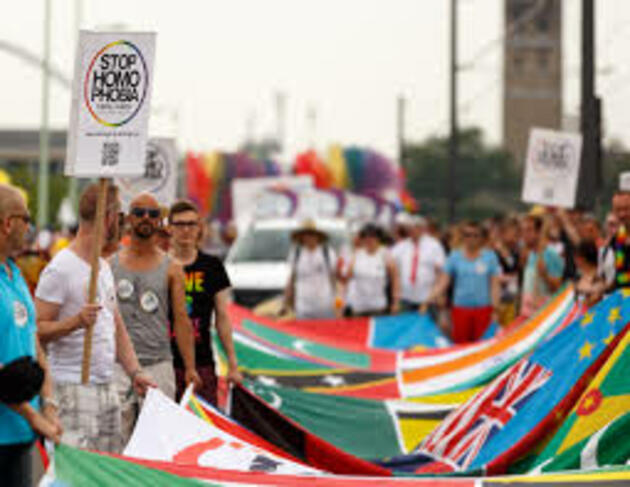
Activists at Cologne Pride carrying a banner with the flags of the 72 countries where homosexuality is illegal
Today, in the 72 countries that criminalise same-sex relations, 50% of them are a part of the Commonwealth. As Chimamanda Ngozi Adichie said “colonialism is not historical, it is contemporary, and the effects are present every day.” However, some countries have now celebrated freeing themselves of these anti-LGBT laws, including India in 2018 and Botswana in 2019.
Phyll Opoku-Gyimah, founder of UK Black Pride was reported to have turned down an MBE over LGBTQ+ persecution in the commonwealth. She told DIVA Magazine “I don't believe in empire. I don't believe in, and actively resist, colonialism and its toxic and enduring legacy in the Commonwealth, where - among many other injustices - LGBTQI people are still being persecuted, tortured and even killed because of sodomy laws, including in Ghana, where I am from, that were put in place by British imperialists.”
As time went on, slowly attitudes towards LGBTQ+ people evolved. The French Revolution in 1789 sparked their criminal code to be rewritten, this time with no penalties against homosexuality. Even with this move in France, however, LGBTQ+ activity was still viewed harshly in most other places in Europe. It wasn’t until over 100 years later, in 1932, that Poland became the second European country to decriminalise homosexuality. They were then followed by Denmark in 1933, Iceland in 1940, Switzerland in 1942 and Sweden in 1944.
In the 1920’s, what is thought to be the first ever Gay Rights Organisation was created by Magnus Hirschfeld in Berlin, Germany. The self-described “Jewish, gay, socialist, sexologist” founded the Institut für Sexualwissenschaft, or Institute of Sexual Science and with it a new approach to studying sexuality and gender. Within his institute, worked a lawyer who was fighting the Ministry of Justice to allow transgender people to have their gender legally recognised. Sadly, his views on sexuality and gender were attacked by conservative Christians and Nazi’s and he was used as an example of the “corrupt Jew”. Majority of his work and research was then later destroyed by the Nazis as they came into power and he fled to France to escape persecution.
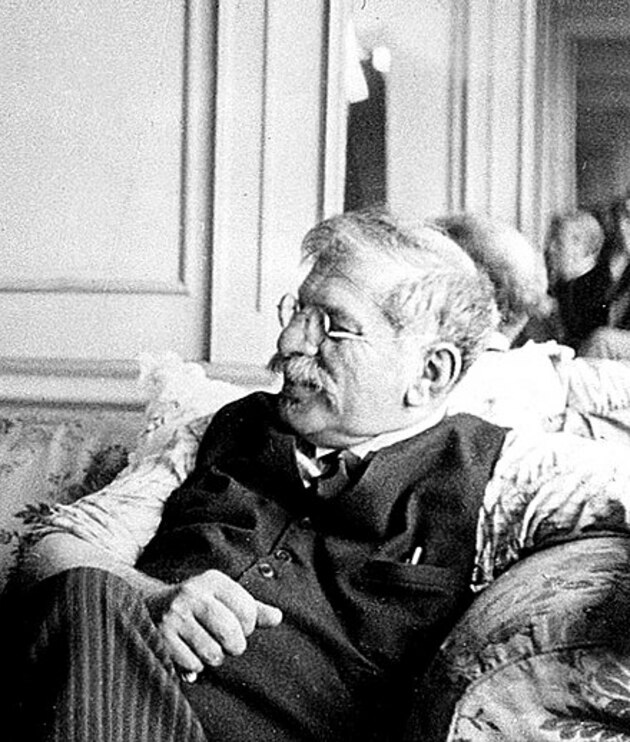
Magnus Hirschfeld in 1929
Throughout the 20th Century, Europe saw dictatorships with extreme anti-LGBTQ+ regimes. Including the Soviet Union, Francisco Franco's reign in Spain and Nazi Germany. World War II saw a bleak period for Europe, with millions of people persecuted. It is estimated that among them, 100,000 gay men were arrested and up to 15,000 placed in concentration camps. A downward pointing pink triangle was sown onto the shirts of these men, as a badge of shame, dehumanizing them. It wasn’t until the 1970’s that the pink triangle was reclaimed by activists, becoming a global symbol of queer power and pride.
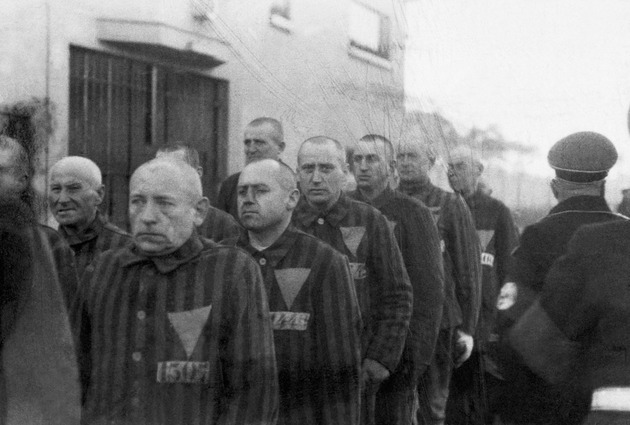
Prisoners wearing pink triangles on their uniforms are marched outdoors by Nazi guards at the Sachsenhausen concentration camp in Germany on Dec. 19, 1938.
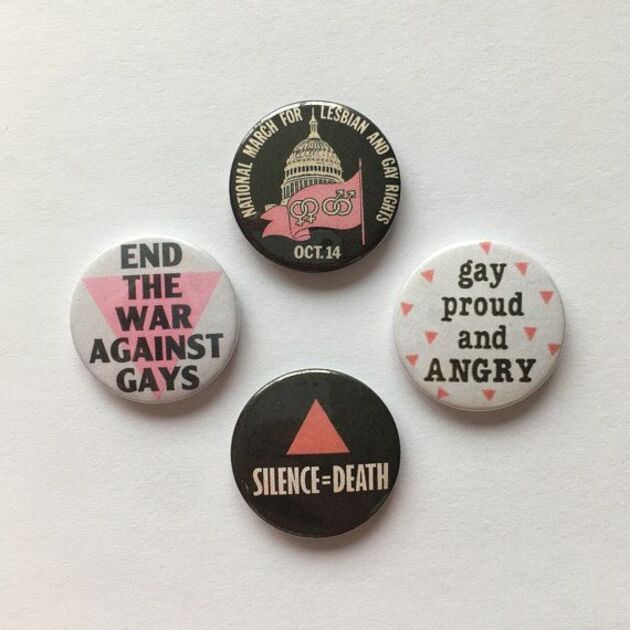
Badges with the pink triangle symbol in support of LGBTQ+ rights
Post-World War II, in 1956, East Germany abolished the part of their penal code that criminalised homosexuality and in 1962 Czechoslovakia did the same. It wasn’t until 1967, that the UK finally decriminalised homosexuality, and even then, it was only in England and Wales. Scotland followed suit, but not until 1980.
By the 1960’s several places in Europe had rid themselves of their medieval anti-sodomy laws and the modern-day LGBTQ+ movement was born, with activists across the continent standing up for equality.
In 1972, Sweden made a historical move, when they became the first place in the world to introduce legislation allowing transgender people to change their gender marker on legal documents, began to provide free gender affirmation treatment and introduced an equal age of consent. In 1979, they then orchestrated a large-scale protest whereby Swedish people across the country called in sick to work, claiming homosexuality as the reason. This was in protest of homosexuality being classified as an illness. They managed to successfully change this classification later that year, making Sweden the first European country to do so.
Throughout this time, LGBTQ+ activists across Europe stood up and fought discriminatory laws, breaking taboos that had been in place for hundreds of years and bringing attention and visibility to the queer community. Their tireless fight changed the way that sexuality and gender are perceived, both in Europe and across the world. This began with overturning laws against homosexuality, but moved onto pushing for same-sex partnerships, marriages, legal recognition for trans identities, adoptions rights and laws against LGBTQ+ discrimination and hate crimes.
Along with these law changes, cultures and attitudes have also changed. Today, there are hundreds of Pride events across Europe, where LGBTQ+ identities are celebrated and embraced. Furthermore, the European Union offers additional protection to LGBTQ+ people via their human rights laws. Protection and support of LGBTQ+ people has become organised and strategic, with large-scale organisations working around the clock to change laws and attitudes, such as ILGA-Europe and Amnesty International. This is sadly not the case for everywhere in Europe and although we’ve had many successes, there is still progress to be made.
Although Poland was one of the first European countries to decriminalise homosexuality, today they are seeing a rise of anti-LGBT propaganda and hate. Only earlier this week it was reported that parts of the country have been decaled “LGBT-free zones” by government officials, a sad attempt to erase and oppress LGBTQ+ people. On the outskirts of Europe, Russia is also one of the most dangerous places for LGBTQ+ people, with an ongoing ‘gay purge’ taking place in Chechnya, “The Russian authorities have shown themselves to be complicit in heinous crimes committed in Chechnya against people believed to be gay or lesbian” said Marie Struthers, Amnesty International’s Director for Eastern Europe and Central Asia. These parts of Europe are in stark contrast to the more progressive countries, but it’s vital that they are not forgotten or left behind.
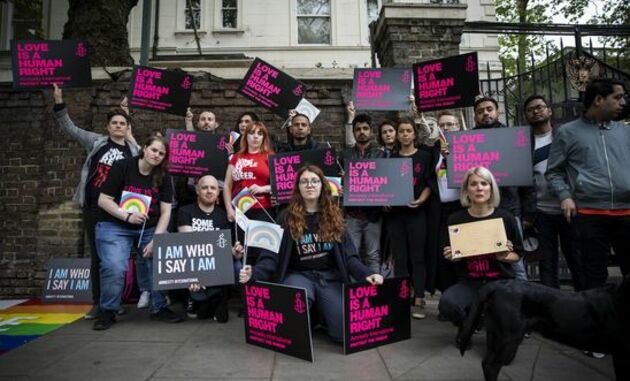
Campaigners outside the Russian Embassy in London protesting treatment of LGBTQ+ people, 2017
The fight for acceptance is one that has been burning for decades and is still not over. Only earlier this year did we see Northern Ireland legalise same-sex marriage and just a handful of countries currently legally recognise non-binary people’s identity. On top of this, many places within Europe and past European colonies are still fighting for basic safety of LGBTQ+ people. LGBTQ+ history is often erased and forgotten, which is why it is vital we continue to tell these stories. As journalist Emmet King said “History is often the root of our identities. We align ourselves by the defining moments of our histories. Whether it’s France and its revolutions or queer people and Stonewall, it is crucial to protect and preserve our histories. It makes us who we are. And is central to where we are today. Don’t let our history be erased”.

